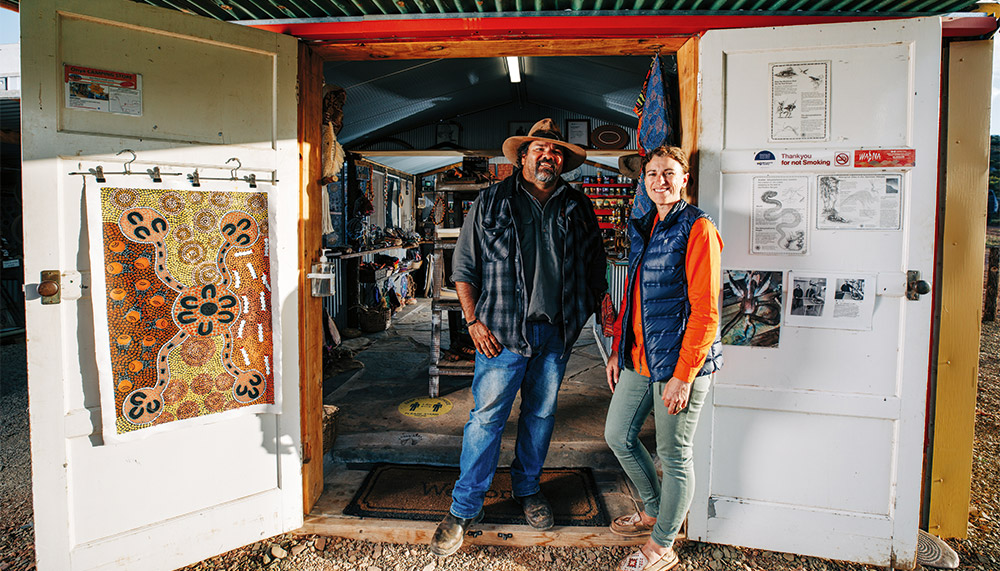Hand-carved boomerangs brought Adnyamathanha man Kristian Coulthard home.
Story Gretel Sneath Photos Robert Lang
When Kristian Coulthard saw one of his hand-carved boomerangs for sale beside cheap imitation ‘Aboriginal’ souvenirs from China, he knew that he had to put a value on authenticity. “People were just buying them because they were pretty. They were missing out on that whole story,” he explains.
In Adnyamathanha country, where Kristian lives, a boomerang is a wadna wadna, or ‘bent stick’. Kristian’s ancestors used them for digging, making music and friction fires, rather than traditional hunting. “People think that every boomerang returns, but the Adnyamathanha didn’t do return boomerangs; we traded for them,” he says.
It was Kristian’s grandfather Clem Coulthard and great-grandfather Ted Coulthard who taught him to carve wadna wadna as a young boy. As he patiently chips away at a piece of mulga beside a crackling fire at his Flinders Ranges gallery, he shares their stories of how each carving came to be. “I felt that I owed it to both of them to honour the culture and kinship that they had taught me, and I’m finding that people are also hungry for that authentic knowledge from a custodian who has had it passed down,” Kristian says. “It isn’t just about buying a boomerang – I tell them how it was used. The same goes for artwork – some people go to a gallery in a big city and spend $20,000 on a painting and don’t even know the story behind it. I want to educate people about where the art comes from.”
This story excerpt is from Issue #145
Outback Magazine: October/November 2022










